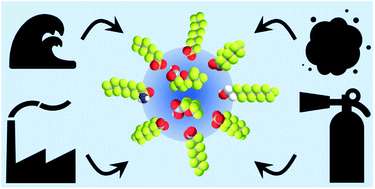PFAS on atmospheric aerosol particles: a review
Abstract
Per- and polyfluoroalkyl substances (PFAS) are persistent organic pollutants of concern to human health. These synthetic chemicals are in widespread use for consumer products, firefighting foams, and industrial applications. They have been detected all over the globe, including at remote locations distant from any possible point sources. One mechanism for long-range transport of PFAS is through sorption to aerosol particles in the atmosphere. PFAS can be transferred from the sea surface to sea spray aerosol particles through wave breaking and bubble bursting, and PFAS emitted to the atmosphere in the gas phase can sorb to particulate matter through gas-particle partitioning. Here we present a comprehensive review of global measurements of PFAS on ambient particulate matter dating back to the first reports from the early 2000s. We summarize findings for the historically important C8 species, perfluorooctanoic acid (PFOA) and perfluorooctane sulfonic acid (PFOS), including detection of isomers and size-segregated measurements, as well as studies of newer and emerging PFAS. We conclude that long-term monitoring of PFAS on particulate matter should be expanded to include more measurement sites in under-sampled regions of the world and that further non-targeted work to identify novel PFAS structures is needed as PFAS manufacturing and regulations continue to evolve.

- This article is part of the themed collections: Atmospheric chemistry, Outstanding Papers 2023 – Environmental Science: Processes & Impacts and Chemistry of Atmospheric Pollutants


 Please wait while we load your content...
Please wait while we load your content...